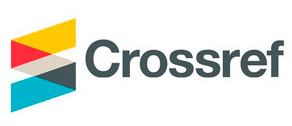Computer simulation of the thermoelectric heat flow sensor on the surface of the human body
DOI:
https://doi.org/10.63527/1607-8829-2022-2-46-60Keywords:
temperature effect, human skin, dynamic mode, computer simulationAbstract
This paper presents the results of computer simulation of cyclic temperature effect on the human skin in dynamic mode. A three-dimensional computer model of the biological tissue has been built with regard to thermophysical processes, blood circulation, heat exchange, metabolic processes and the phase transition. As an example, the case is considered when on the skin surface there is a working tool the temperature of which changes cyclically according to a predetermined law in the temperature range [– 50 ÷ + 50] °C. Temperature distributions in different human skin layers in heating and cooling modes have been determined. The results obtained make it possible to predict the depth of the biological tissue freezing and heating under a given temperature effect.
References
1. Anatychuk L.I. (2003). Thermoelectricity. Vol. 2. Thermoelectric power converters. Kyiv, Chernivtsi: Institute of Thermoelectricity.
2. Anatychuk L.I., Denisenko О.І., Kobylianskyi R.R., Kadeniuk T.Ya., Perepichka M.P. (2017). Modern cryotherapy methods in dermatological practice. Clinical and Experimental Pathology, XVІ, (59), 150 – 156.
3. Maruyama S., Nakagawa K., Takeda H. (2008). The flexible cryoprobe using Peltier effect for heat transfer control. Journal of Biomechanical Science and Engineering, 138 – 150.
4. Moskalyk І.А., Manyk О.М. (2013). On the use of thermoelectric cooling in the practice of cryodestruction. J. Thermoelectricity, 6, 84 – 92.
5. Anatychuk L.I., Denisenko О.І., Kobylianskyi R.R., Kadeniuk T.Ya. (2015). On the use of thermoelectric cooling in dermatology and cosmetology. J. Thermoelectricity, 3, 57 – 71.
6. Moskalyk І.А. (2015). On the use of thermoelectric devices in cryosurgery. Physics and Chemistry of the Solid State, 4, 742 – 746.
7. Kobylianskyi R.R., Kadeniuk T.Ya. (2016). On the prospects of using thermoelectricity for treatment of skin diseases with cold. Scientific Bulletin of Chernivtsi University: collected papers. Physics. Electronics. 5 (1). – Chernivtsi: Chernivtsi National University, 67 – 72.
8. Miller P., Metzner D. (1969. Cryosurgery for tumors of the head and neck – Trns. Am.Ophthalmol. Otolaringol. Soc., 73 (2), 300 – 309.
9. D’Hont G. (1974). La cryotherapie en ORL – Acta. Otorhinolaringol. Belg., 28 (2), 274 – 278.
10. Mazur P. (1968). Physical-chemical factors underlying cell injury in cryosurgical freezing. In: Cryosurgery ed. by R. W. Rand, A. P. Rinfret, H. Leden – Springfield, Illinois, U.S.A. 32 – 51.
11. Gill W., Fraser I. (1968). A look at cryosurgery. – Scot, Med, I., 13, 268– 273.
12. Van Venrjy G. (1975). Freeze-etching: freezing velocity and crystal size at different size locations in samples. Cryobiology, 2 (1), 46 – 61.
13. Bause H. (2004). Kryotherapie lokalisierter klassischer, Neues Verfahren mit Peltier-Elementen (– 32 °C) Erfahrungsbericht Hamangiome. Monatsschr Kinderheilkd, 152, 16 – 22.
14. Anatychuk L.I., Vikhor L.M., Kotsur M.P., Kobylianskyi R.R., Kadeniuk T.Ya. (2016). Optimal control of the time dependence of cooling temperature in thermoelectric devices. J. Thermoelectricity, 5, 5 – 11.
15. Anatychuk L.I., Kobylianskyi R.R., Kadeniuk T.Ya. (2017). Computer simulation of local thermal effect on the human skin. J. Thermoelectricity, 1, 69 – 79.
16. Anatychuk L.I., Vikhor L.M., Kobylianskyi R.R., Kadeniuk T.Ya. (2017). Computer simulation and optimization of the dynamic operating modes of a thermoelectric device for treatment of skin diseases. J. Thermoelectricity, 2, 44 – 57.
17. Anatychuk L.I., Vikhor L.M., Kobylianskyi R.R., Kadeniuk T.Ya., Zvarich О.V.(2017). Computet simulation and optimization of the dynamic operating modes of a thermoelectric device for reflexotherapy. J. Thermoelectricity, 3, 68 – 78.
18. Anatychuk L., Vikhor L., Kotsur M., Kobylianskyi R., Kadeniuk T. (2018). Optimal control of time dependence of temperature in thermoelectric devices for medical purposes. International Journal of Thermophysics, 39, 108. https://doi.org/10.1007/s10765-018-2430-z.
19. Anatychuk L.I., Kobylianskyi R.R., Fedoriv R.V. (2019). Methodology for taking into account the phase transition in the biological tissue during computer simulation of cryodestruction process. J. Thermoelectricity, 1, 46 – 58.
20. Anatychuk L.I., Kobylianskyi R.R., Fedoriv R.V. (2019). Computer simulation of cryodestruction process of the human skin with thermoelectric cooling. J. Thermoelectricity, 2, 21 – 35.
21. Jiang S.C., Ma N., Li H.J., Zhang X.X. (2002). Effects of thermal properties and geometrical dimensions on skin burn injuries. Burns, 28, 713 – 717.
22. Cetingul M.P., Herman C. (2008). Identification of skin lesions from the transient thermal response using infrared imaging technique. IEEE, 1219 – 1222.
23. Ciesielski M., Mochnacki B., Szopa R. (2011). Numerical modeling of biological tissue heating. Admissible thermal dose. Scientific Research of the Institute of Mathematics and Computer Science, 1 (10), 11 – 20.
24. Filipoiu Florin, Bogdan Andrei Ioan, Carstea Iulia Maria (2010). Computer-aided analysis of the heat transfer in skin tissue. Proceedings of the 3rd WSEAS Int. Conference on Finite Differences – Finite Elements – Finite Volumes – Boundary Elements, 53 – 59.
25. Carstea Daniela, Carstea Ion, Carstea Iulia Maria (2011). Interdisciplinarity in computer-aided analysis of thermal therapies. WSEAS Transactions on Systems and Control, 6 (4), 115 – 124.
26. Deng Z.S., Liu J. (2005). Numerical simulation of selective freezing of target biological tissues following injection of solutions with specific thermal properties. Cryobiology, 50, 183 192.
27. Han Liang Lim, Venmathi Gunasekaran (2011). Mathematical modeling of heat distribution during cryosurgery. https://isn.ucsd.edu/last/courses/beng221/problems/2011/project10.pdf.
28. Shah Vishal N., Orlov Oleg I, Orlov Cinthia, Takebe Manabu, Thomas Matthew, and Plestis Konstadinos (2018). Combined cryo-maze procedure and mitral valve repair through a ministernotomy. Multimed Man Cardiothorac Surg. doi: 10.1510/mmcts.2018.022.
29. Rykaczewski Konrad (2019). Modeling thermal contact resistance at the finger-object interface. Temperature, 6 (1), 85 – 95.
30. Pennes H.H. (1948). Analysis of tissue and arterial blood temperatures in the resting forearm J. Appl. Physiol. 1 (2), 93 – 122.
31. COMSOL Multiphysics User’s Guide (2010). COMSOLAB.




